Adrian Gottlieb shares a 10-step sequence for his superb figure painting “Duality,” as seen in Fine Art Connoisseur.
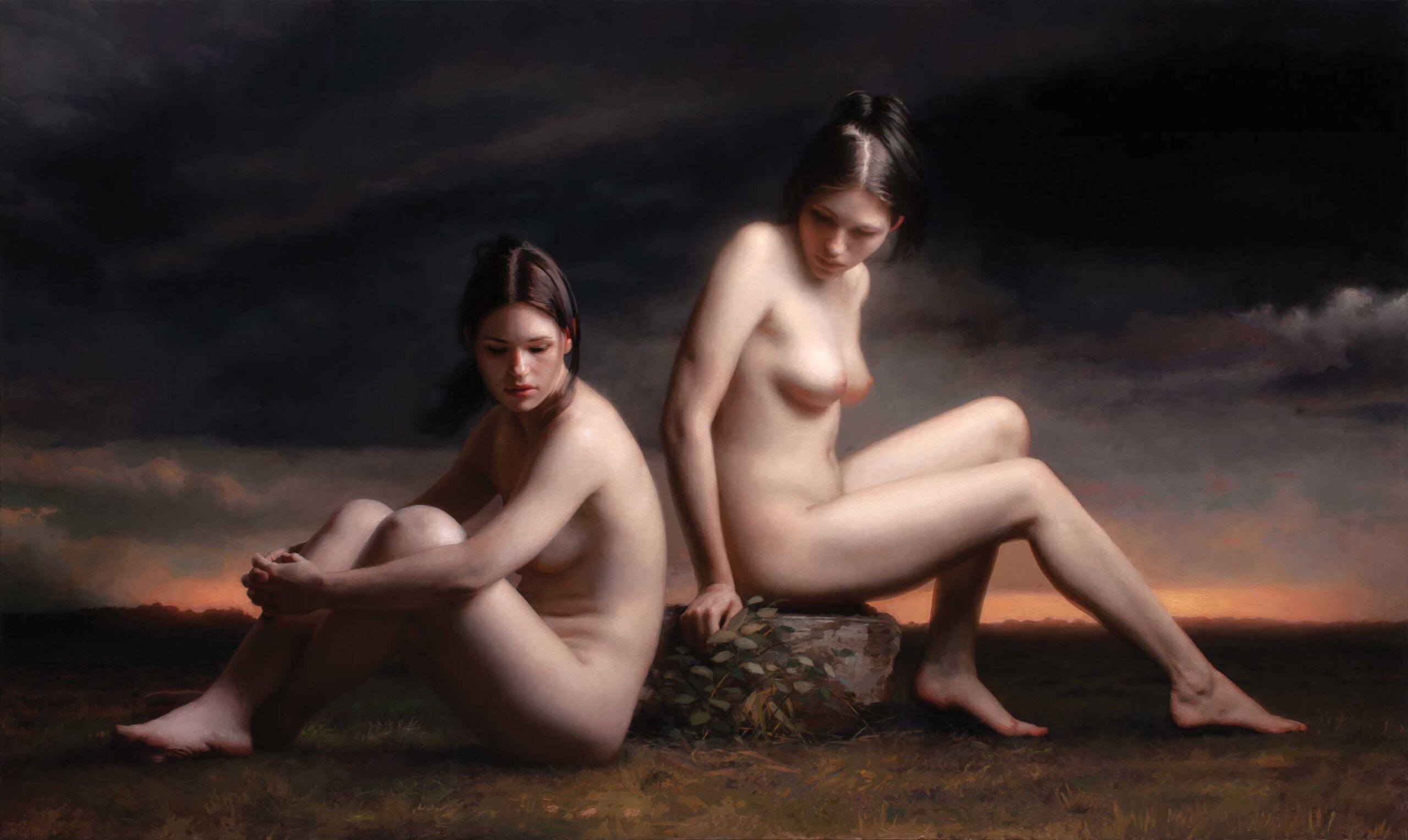
Adrian Gottlieb: Inspiration and Hard Work
by Peter Trippi, Editor-in-Chief of Fine Art Connoisseur
Based in Urbana, Illinois, the artist Adrian Gottlieb (b. 1975) has been highly regarded in the world of contemporary realism for almost two decades. He is best known for his figurative pieces and portraiture, both official and personal, and is also admired for an uncanny ability to integrate radiant figures into realistic landscapes.
Gottlieb often works directly from the live model, as well as from images taken during photoshoots he directs. What comes off his easel are people who are luminous — many seem to glow from within — and replete with both purpose and poise. Gottlieb likes to quote the story of Rembrandt’s student asking how the master knew when a painting was complete. He was told to recall the vision he had when he began the piece. When that vision was fulfilled, the painting was finished. Seeking to create what he calls a “total experience,” Gottlieb’s portraits are notably insightful, bringing us closer to the sitter through a heightened awareness of that person’s humanity.
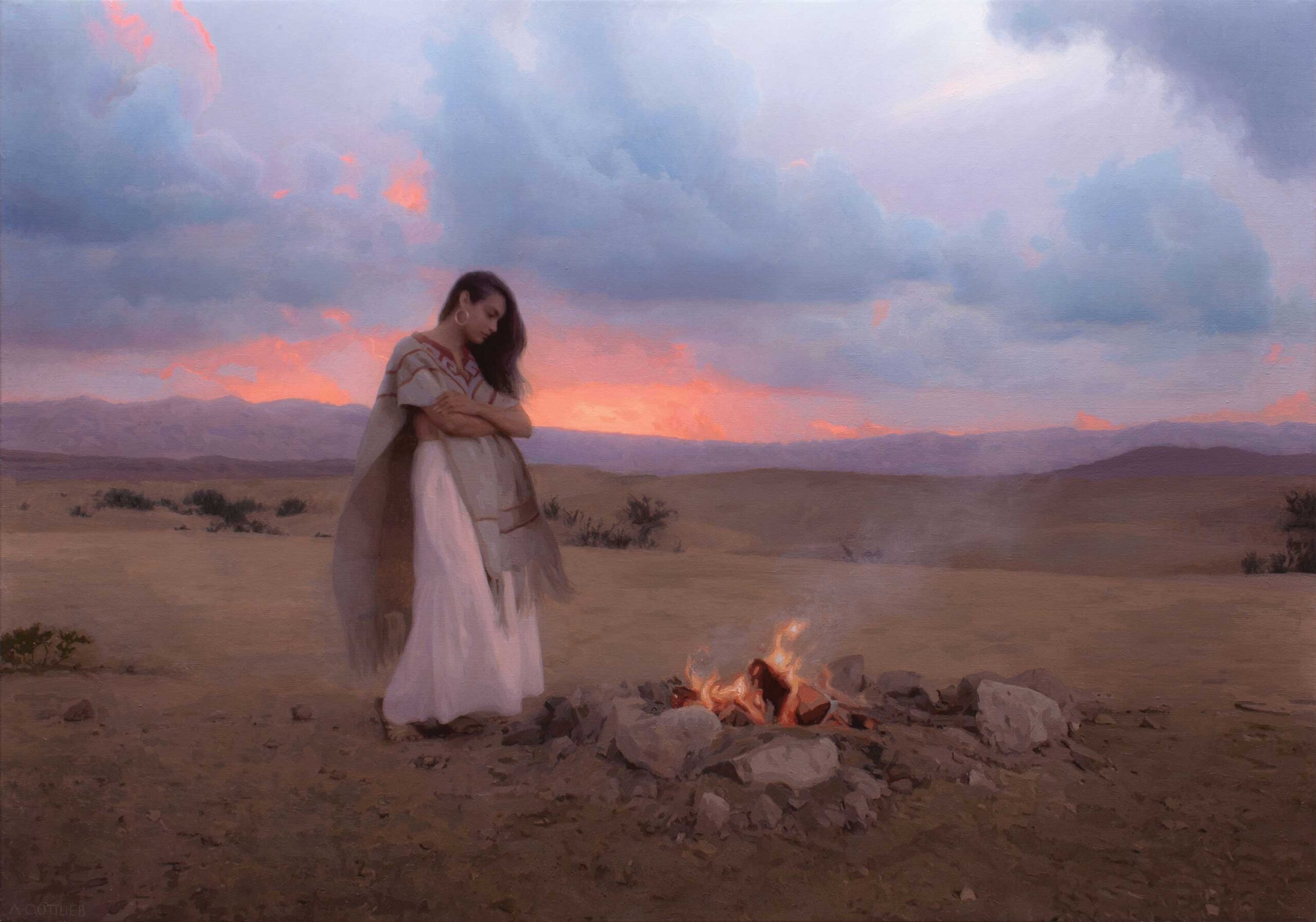
Born and raised in Vermont, Gottlieb loved oil painting and realism from early on, but found that the basic skills he wanted to learn were not being taught at Carnegie-Mellon University in Pittsburgh, where he had enrolled as an undergraduate. Soon he transferred to the B.F.A. program in illustration at New York’s Rochester Institute of Technology, where his drawing skills improved quickly. In addition to independent study in anatomical drawing, Gottlieb spent three consecutive summers in Florence learning Old Master painting techniques with Charles H. Cecil and Nicholas Beer. After this he pursued three years of graduate study at the Florence Academy of Art.
Gottlieb then moved to California to teach at the Los Angeles Academy of Figurative Art, after which he instructed workshop groups in his own studio for 15 years. Now he lives in Urbana, working with models, executing portrait commissions, and teaching workshops.
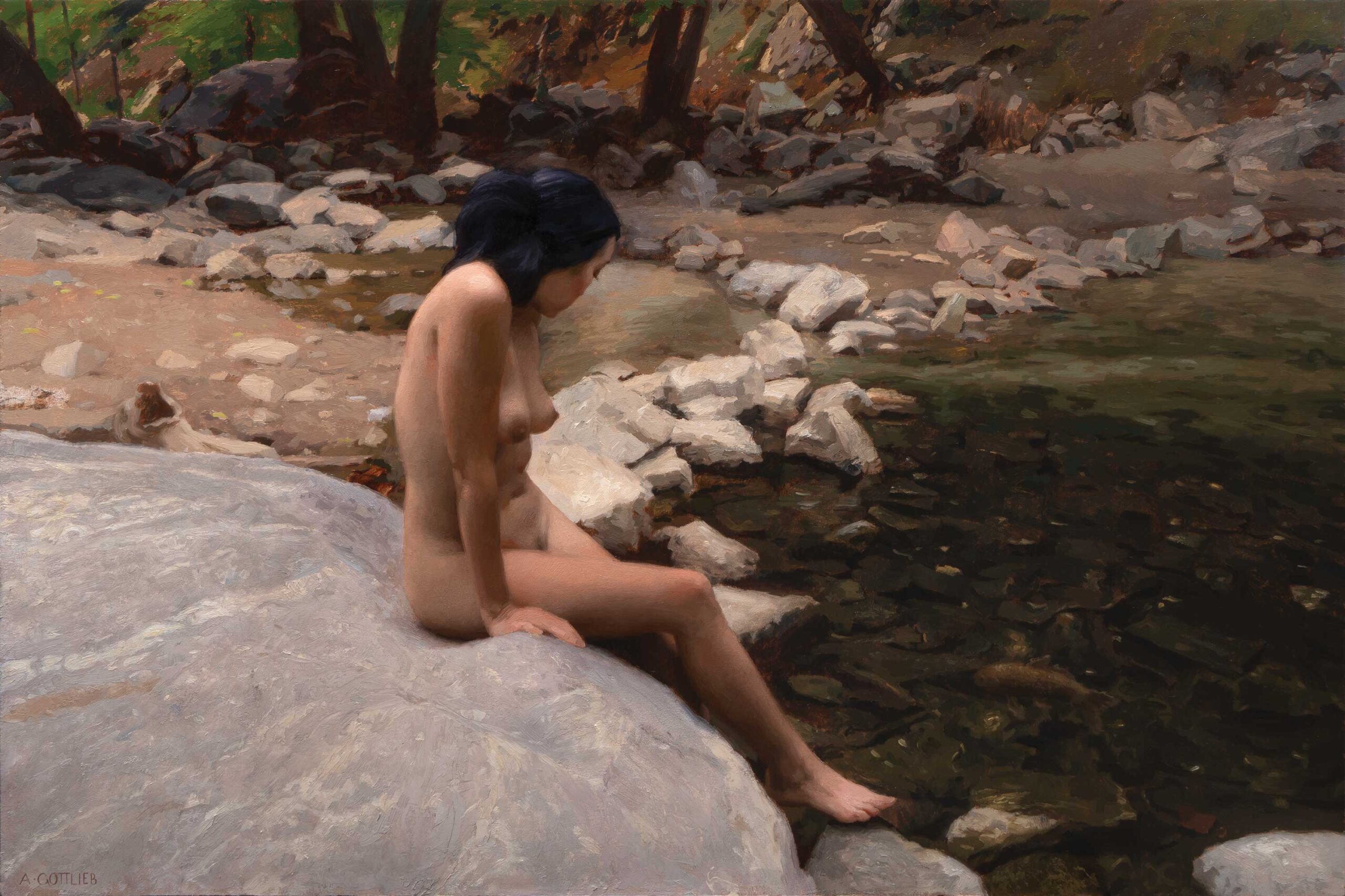
Like many artists, Gottlieb carefully documents each stage of his process. One example is the superb two-figure painting “Duality,” and now he has kindly shared a sequence of 10 photographs with Fine Art Connoisseur (sister publication to Realism Today) so that we can better appreciate how he developed it. The commentaries here are in Gottlieb’s own words, and they underscore how purposeful an artist must be as he or she moves through the working process.
Next time you encounter a painting as well made as Adrian Gottlieb’s “Duality,” pause to consider how much thought and effort went into bringing it to completion.
Step-by-Step Demo of the Figure Painting “Duality”
by Adrian Gottlieb
This is stretched linen triple-primed with lead white oil primer. I have used a color mixed with Oleogel, alizarin crimson, and olive green to lay in the basic drawing and massing. I’ve left the canvas fairly bright, as this allows the painting to stay light enough as it ages.
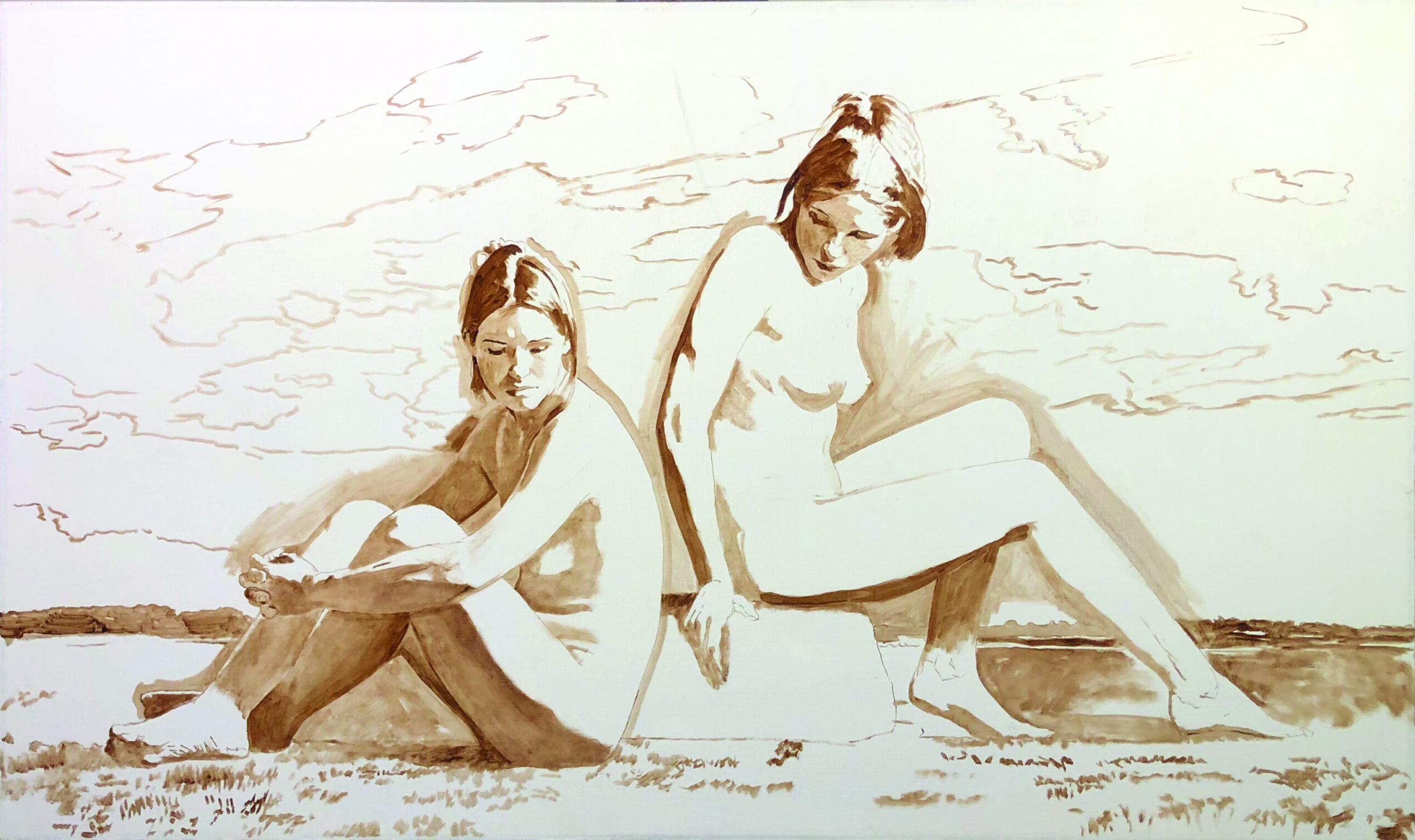
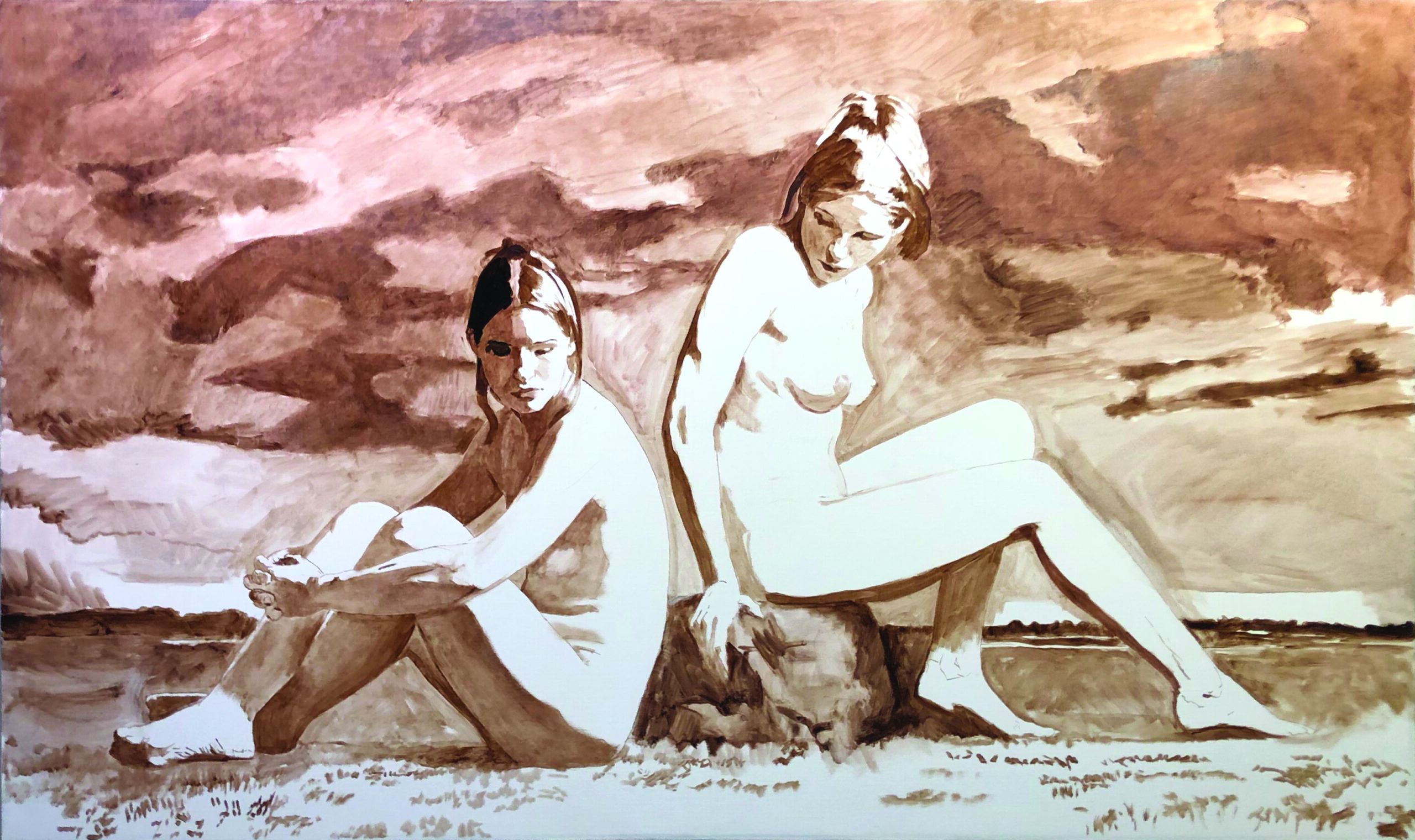
***
As I mass the painting in, I will rub in a thin coat of Oleogel with a little alizarin and olive green as I go. This gives a midtone harmony easier to work into and allows the painting to cover the canvas more quickly and easily. The Oleogel is ideal since it’s more “giving” than a dry canvas alone, while still containing enough “tooth” to prevent the surface from becoming too slippery or greasy.
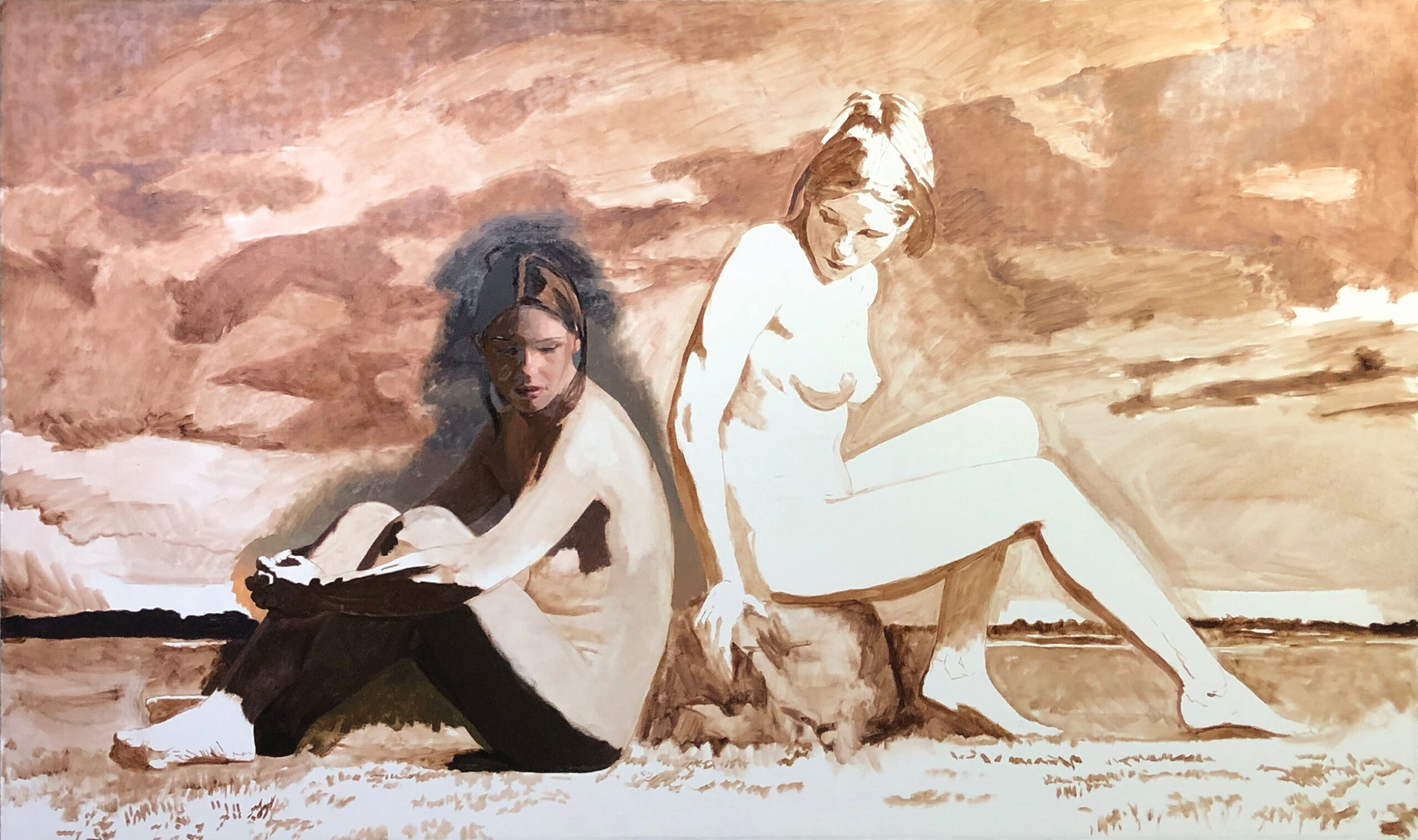
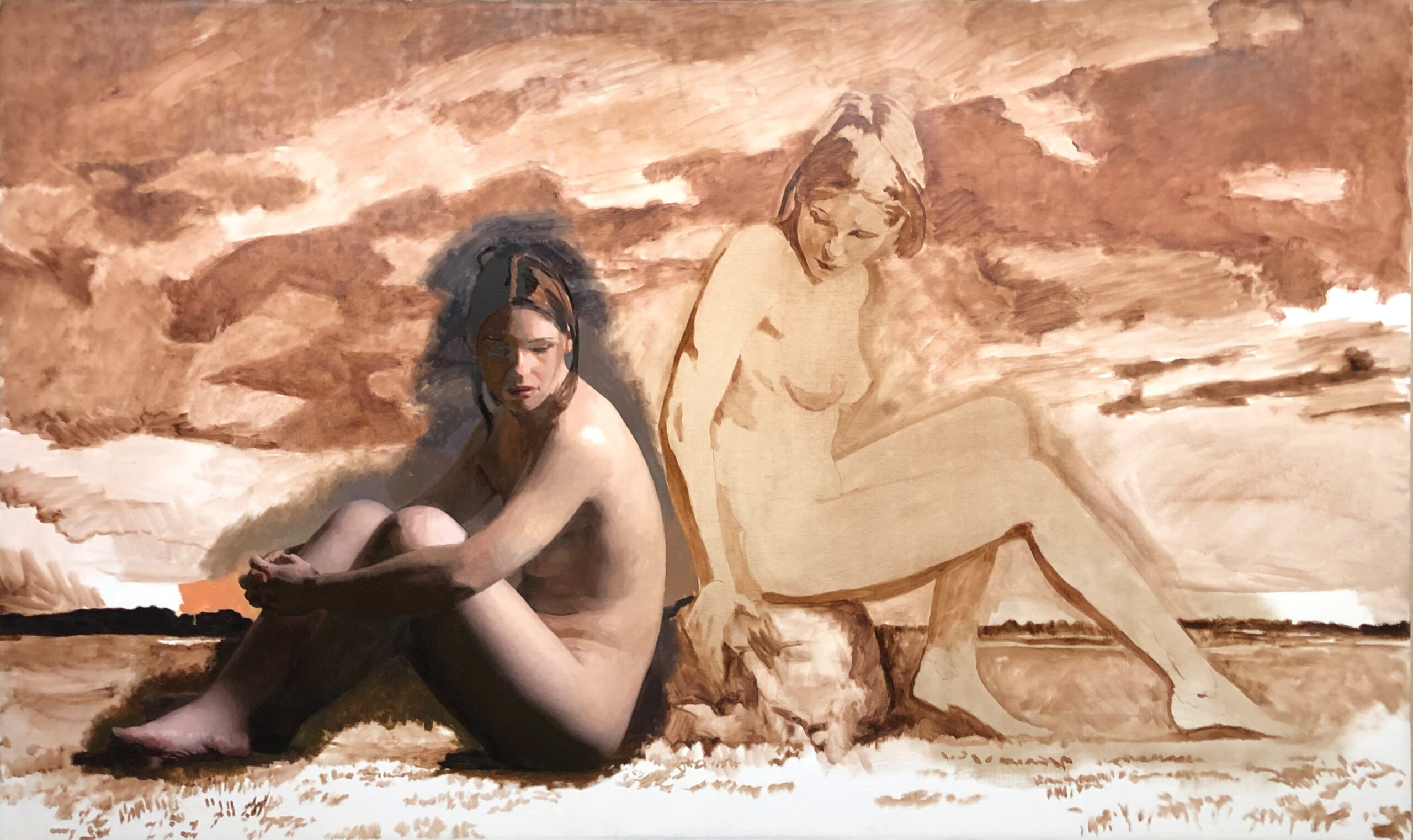
***
I am not getting too hung up on good painting at this stage, preferring to just mass things in since, even with a color study guiding me, areas will change as their relationships to others become clearer. I also lay in the shadows first to establish the anchor my lights hold onto.
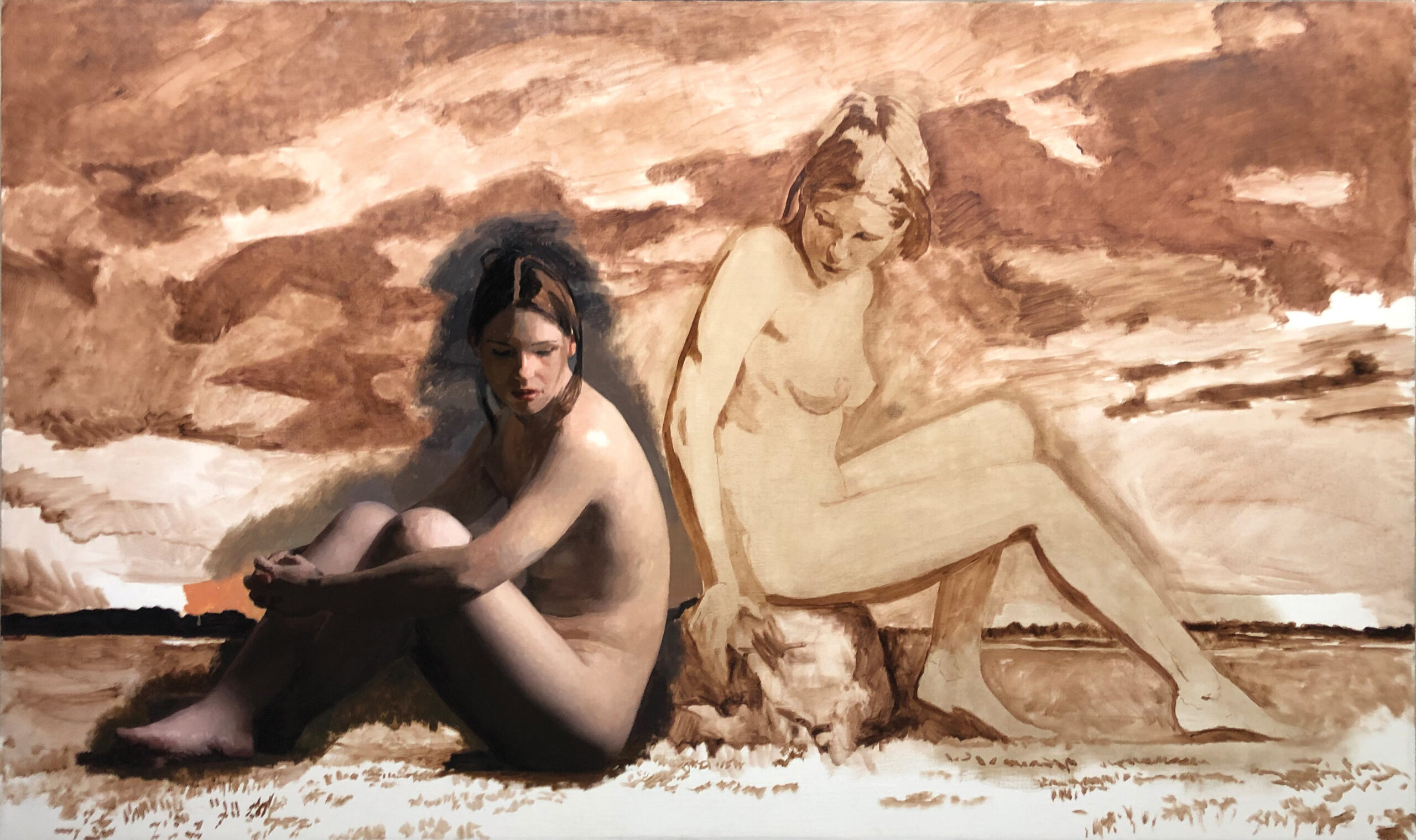
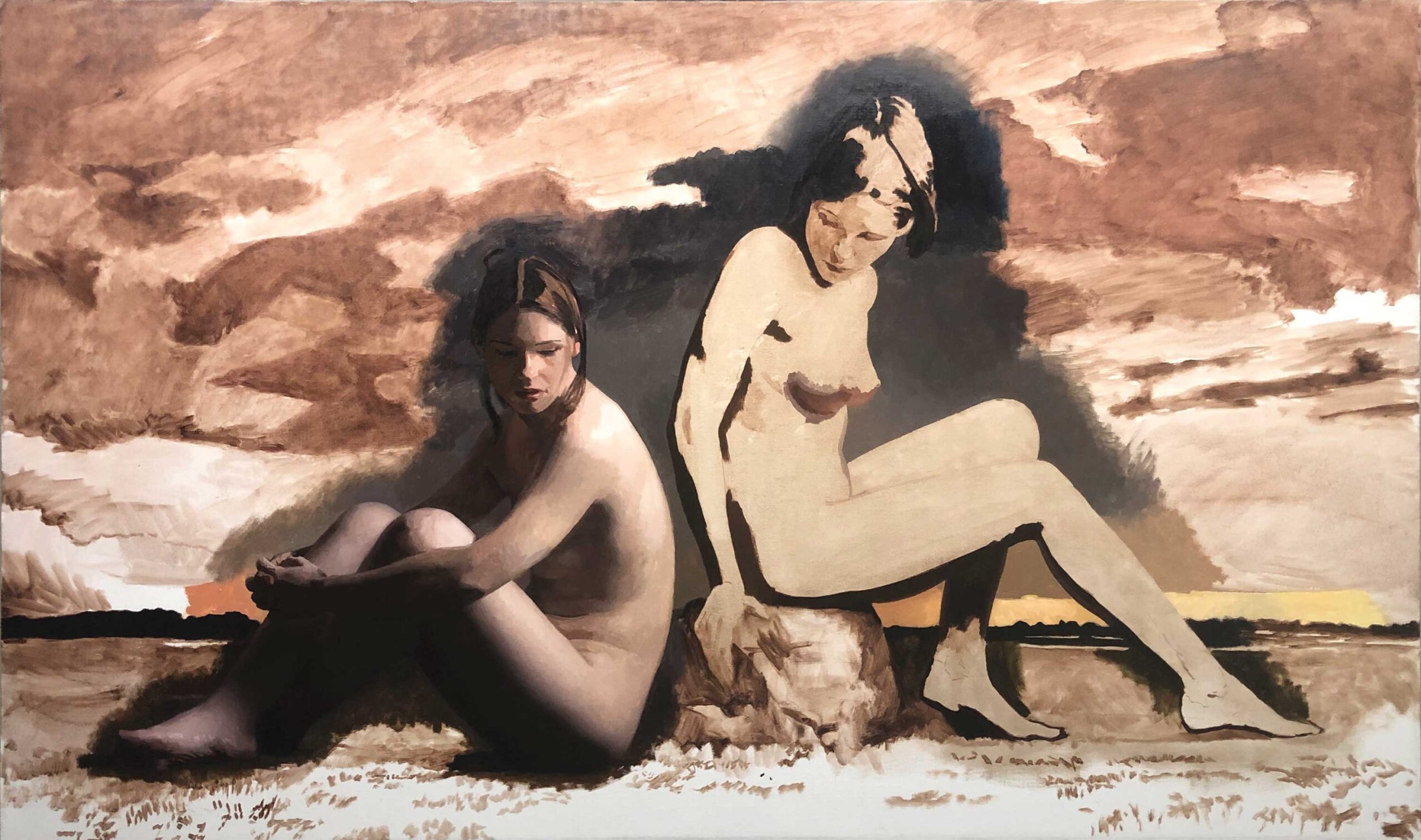
***
Having roughly massed in the figures, I move on to the background. It’s best not to hold off too long on this since the figures will depend on their environment to read correctly. People will disagree as to whether it’s better to lay in the foreground or the background first, but so long as you don’t put one too far ahead of the other, it will really just come down to personal preference.

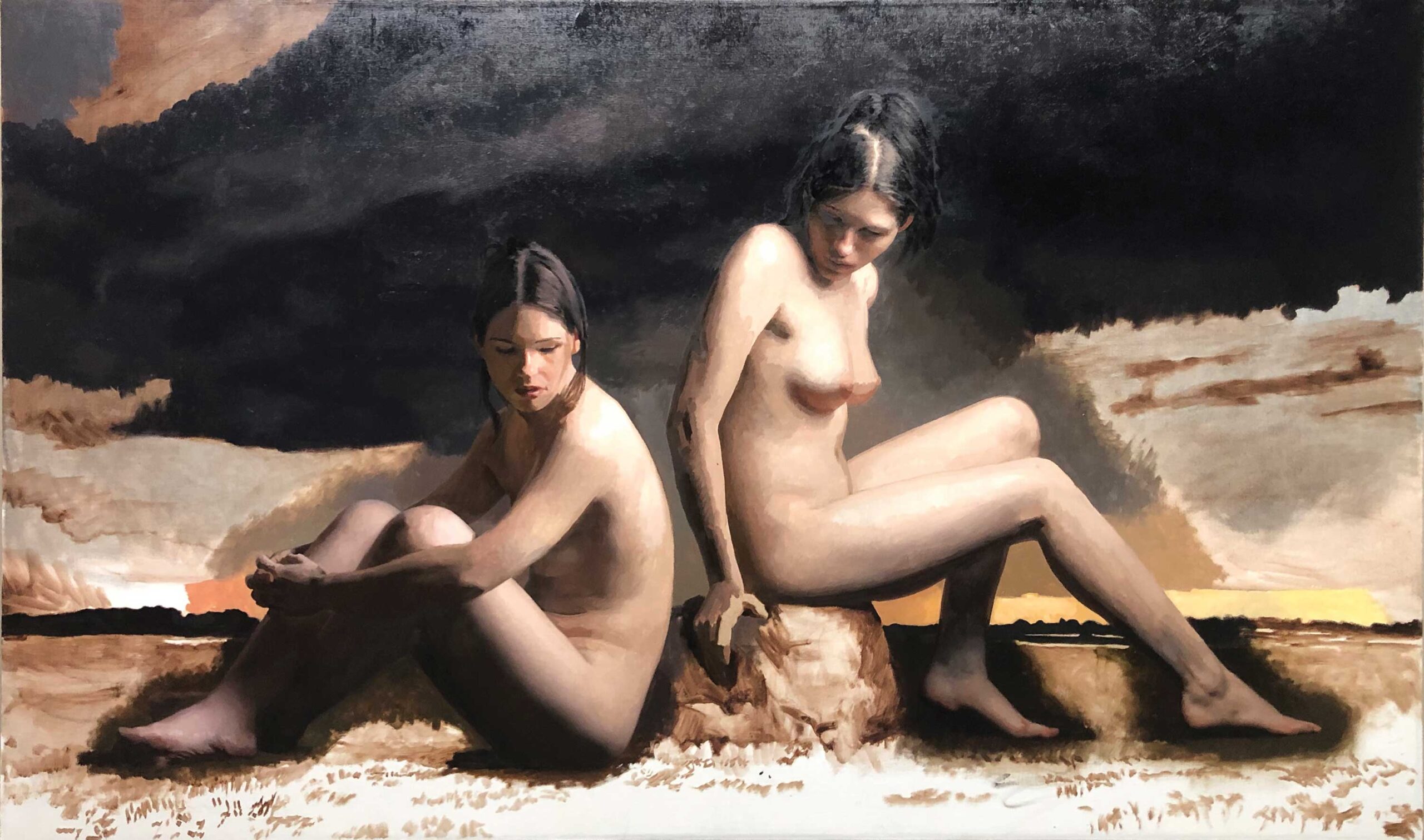
***
With the canvas entirely massed in, I am now in a much better position to change the tonal relationships of certain areas to work better. This might include harmonizing the background immediately around the figures with the rest of the background, or making the shadows of the legs at right harmonize with the bright sunset better, and also to model the forms.
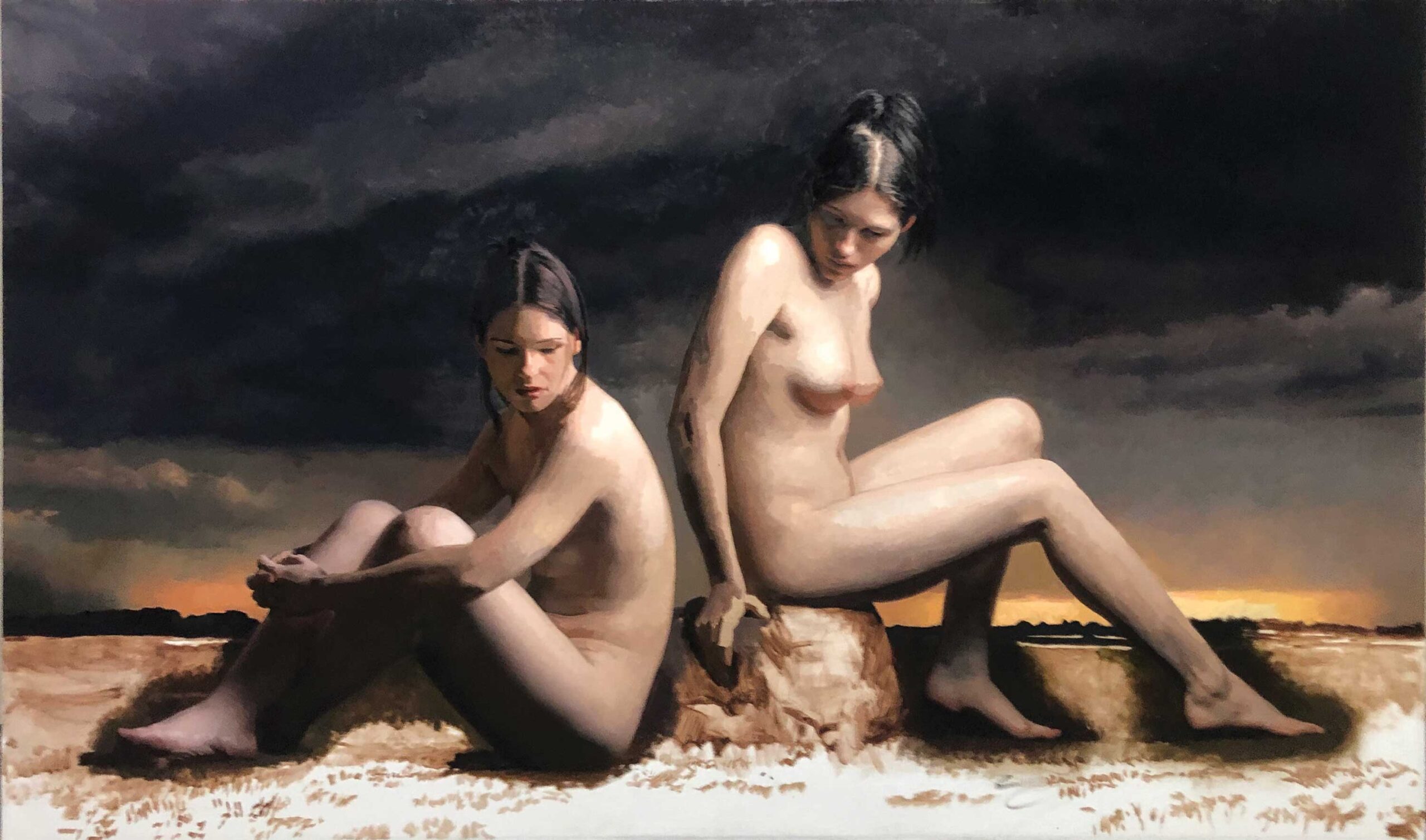
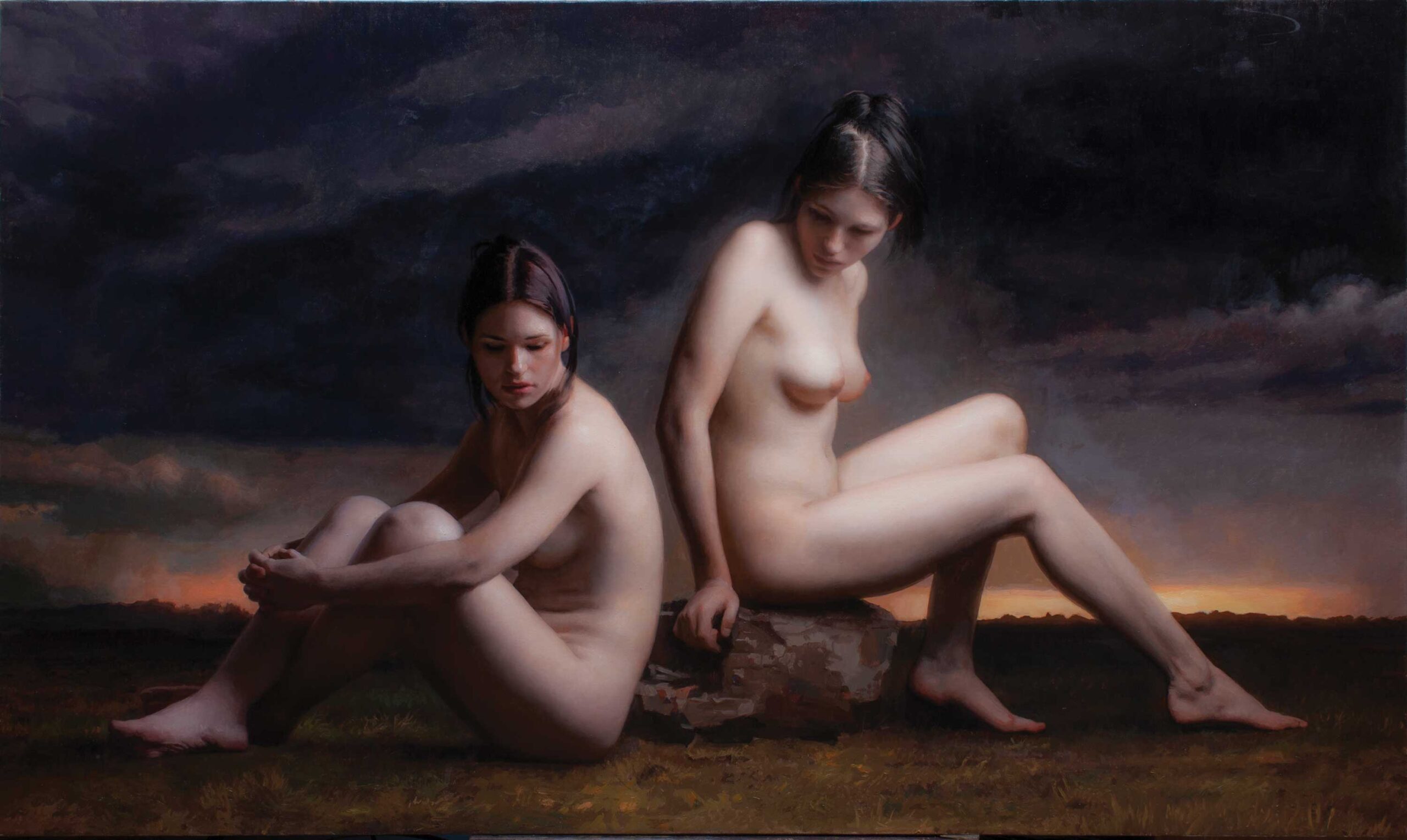

Visit Adrian Gottlieb’s website at www.adriangottlieb.com.
***
Published six times per year, Fine Art Connoisseur is now a widely consulted platform for the world’s most knowledgeable experts, who write articles that inform readers and give them the tools necessary to make better purchasing decisions. Fine Art Connoisseur‘s jargon-free text and large color illustrations are attracting an ever-growing readership passionate about high-quality artworks and the fascinating stories around them. Subscribe here.
Browse more articles on figure painting and contemporary art here at RealismToday.com.




